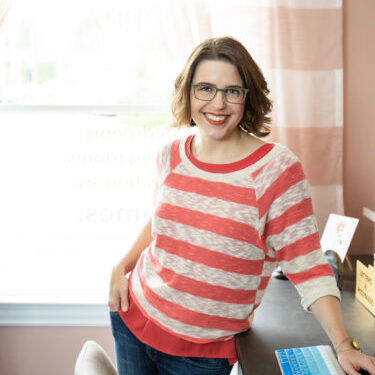Whether you charge hourly or with a flat fee in your interior design business is entirely up to you, and there are pros and cons to both options.
Pros of charging interior design clients hourly:
- You get paid for every hour you work.
- You don’t have to spend time estimating a project.
- You don’t risk estimating wrong and having to work for “free.”
- You don’t have to have a scary conversation with clients about big numbers (which might mean easier sales conversions).
Cons of charging interior design clients hourly:
- You will only get paid for every hour you work. There is no way to be rewarded for working faster or smarter.
- You will only get paid for every hour you bill. (And many designers don’t actually bill every hour they work, due to poor time tracking, or feeling guilty for charging the client the real-time it takes to source the perfect lamp.)
- You may get push-back from clients who want to know what they are going to pay, especially so they can budget for it.
- You may feel pressured every hour you work, knowing you’ll have to bill for it, instead of being able to get into the creative flow.
Pros of charging interior design clients a flat fee:
- Once you start the project you don’t have to have “hard” conversations with your clients about money because there are no surprise bills.
- As you gain experience you’ll be rewarded for working faster and smarter, since you’ll be able to charge the same Flat Fee but may get the work done in fewer hours.
- You don’t have to justify every hour. If you want to spend 30 hours looking for a perfect lamp, you can.
- You may look more professional since only an experienced service provider knows how to put together a flat-fee project.
Cons of charging interior design clients a flat fee:
- If you don’t estimate well, you may end up having to work for “free.”
- If you are not good at establishing a scope of work and managing your clients to avoid scope creep, you may end up working for “free.”
- It may be scary to present your prospective client with a large fee, increasing your sales anxiety.
Flat fee may be a good fit for you if:
- You tend to be really efficient and want to be rewarded for working smarter and faster.
- You feel anxious when sending “surprise” bills to a client, and this would reduce your anxiety.
- You want to feel free to spend as much time (or as little time) as needed for your creative process without having to defend how you spend your time.
- You are experienced enough to judge how long a certain design scope will take you.
- You excel at setting and maintaining boundaries with clients so you avoid un-paid scope-creep.
- You a good at evaluating a client’s personality and communication style, and feel confident they’ll respect the boundaries of the defined scope.
But maybe you should charge an hourly rate if…
However, if you aren’t good at establishing and maintaining boundaries, aren’t experienced enough to judge how long certain design tasks will take you, have clients who have no problem with paying hourly bills as they come up, or have clients who are not good at respecting boundaries, then a flat fee structure might not be a great fit. In that case, hourly is a common and reputable fee structure.
No matter what: Track. Your. Time!
All that said, whether you charge hourly or charge with a flat fee, you MUST track your time. I say more about tracking your time here, but in short, it’s important because: If you are charging hourly then (duh) you need to track your time in order to bill your time. That’s probably obvious. But if you are charging a flat fee you’re not off the hook and you MUST still track your time because you need to be able to evaluate how many hours you estimated versus how many hours it took to do the project. How else will you know if you are estimating properly? Without this information, you may be leaving money on the table by not charging enough, and you won’t be able to grow your company effectively since you need some way of determining if your employees measure up to your way of doing things! At Seriously Happy Homes we track our time using T-Sheets, but there are tons of time tracking apps out there if you don’t need something that robust yet. Just make sure you can pull a report to see where your time when per project.
May your business always make you Seriously Happy!

Hi! I’m Rebecca!
When I closed my design biz to move to Paris I discovered how hard it was for me to refer my clients to other designers because I couldn't tell what the designer did, who they did it for, or what they delivered!
Now I'm on a mission to help designers nail their niche and set clear client expectations.
It's all about being able to clearly communicate what you do, who you do it for, what they should expect, and what they'll get, and it's the #1 key to getting hired by clients you love to work on projects you're proud of!

